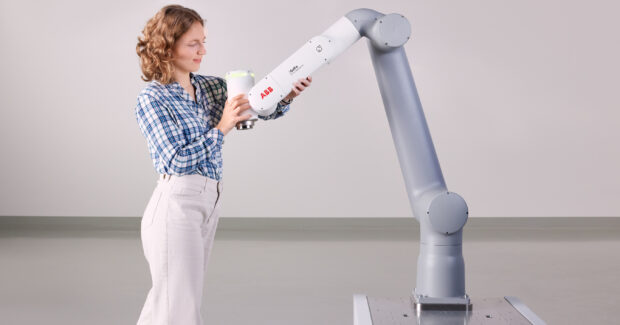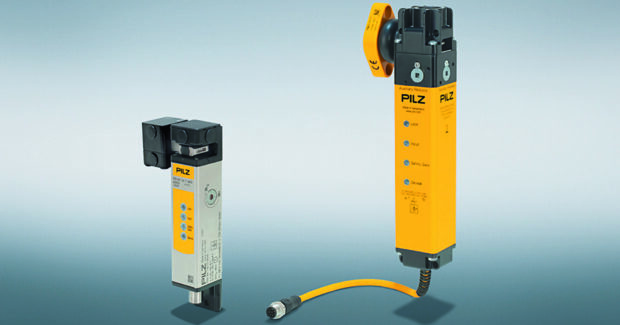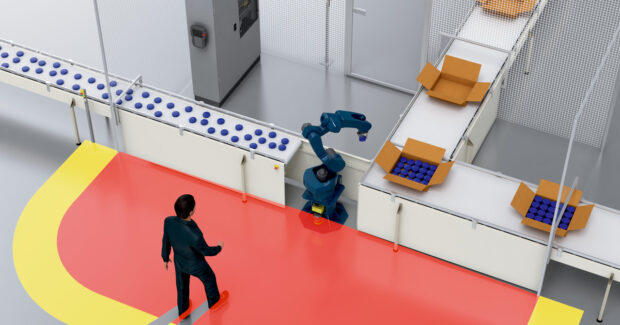Machine Safeguards Reduce Risks in Collaborative Work Environments
Leading-edge sensors and automated systems establish shop floor environments where humans and robots can interact safely.
Posted: January 3, 2024
The ability for your staff to work unhindered among machines and industrial robots continues to advance thanks to technologies where the equipment dynamically responds to changes in surroundings.
Cobots are Safety Certified for Close Collaboration with Human Workers
ABB (Auburn Hills, MI) has launched two new variants of its GoFaTM collaborative robot. The GoFa 10 and GoFa 12 open new possibilities for companies to leverage cobot automation for enhanced efficiency. Handling payloads of up to 10 kgs and 12 kgs with market-leading repeatability, the cobots accomplish an expanded range of tasks in collaboration with factory workers, addressing labor shortages while improving safety and productivity.
ABB’s cobots are straightforward to program, deploy, and use, lowering barriers to automation for first-time users and SMEs. Setup is made easy with lead-through programming and ABB’s Wizard easy programming software, allowing even non-specialists to quickly automate their applications. Pre-installed on the cobots’ ABB’s FlexPendant robot controller, the ABB SafeMove robot safety monitoring app’s cutting-edge safety features include safe speed limits, standstill monitoring, and orientation supervision. Collaboration takes place between robots and factory workers without bulky protective barriers or fencing.
New Small Gate Safety Guard Ideal for Space-critical Applications
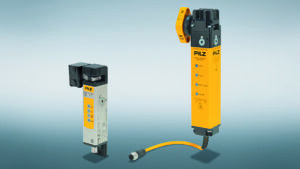
Pilz (Canton, OH), an innovative leader in machine safe automation technology, has added a new sensor to its portfolio of safety locking devices, the PSENmlock mini for space-critical applications. A high level of manipulation protection and added flexibility for increased productivity is inherent in this safety locking device.
With its compact design, the new PSENmlock mini is ideal for space-critical applications, such as flaps or covers to name a few. The actuator has a wide range of mounting options, enabling a high level of flexibility during installation. The PSENmlock mini can be attached simply and quickly using just two screws and installed inside or outside the safeguard.
The actuator also offers a high level of flexibility for installation, as it can be attached from the right, left and front. So even smaller swing gates and sliding gates can easily be safeguarded. As a result, there is greater flexibility for the design of machines.
Using Sensor Data for Adaptive Environmental Perception
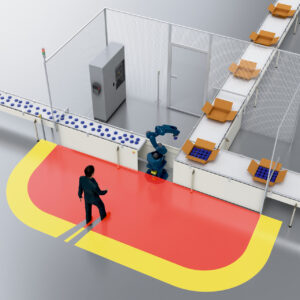
The sBot Speed safe robotics system from SICK (Minneapolis, MN) comprises a safety laser scanner and a Flexi Soft safety controller. It is available in variants for integration into the eco-systems of the robot manufacturers Universal Robots, KUKA, FANUC and Yaskawa and comes not only with pre-configured and tested automation and safety functions but also a complete wiring diagram for problem-free system integration into the relevant robot controller.
The special feature of sBot Speed is its adaptive environmental perception, which ensures unhindered and safe interventions in the robot system at any time by humans. The further a person moves into the working range of the robot, the slower the robot becomes — until it finally comes to a complete stop. Once the person exits the protective and warning field, the robot starts up again automatically — initially at a safely reduced speed until it is able to return to its original working speed. The ability to automatically adjust the operating conditions of the robot based on the location of persons in its surroundings avoids the risk of accidents occurring while at the same time improving productivity by reducing downtimes and optimizing work processes.

